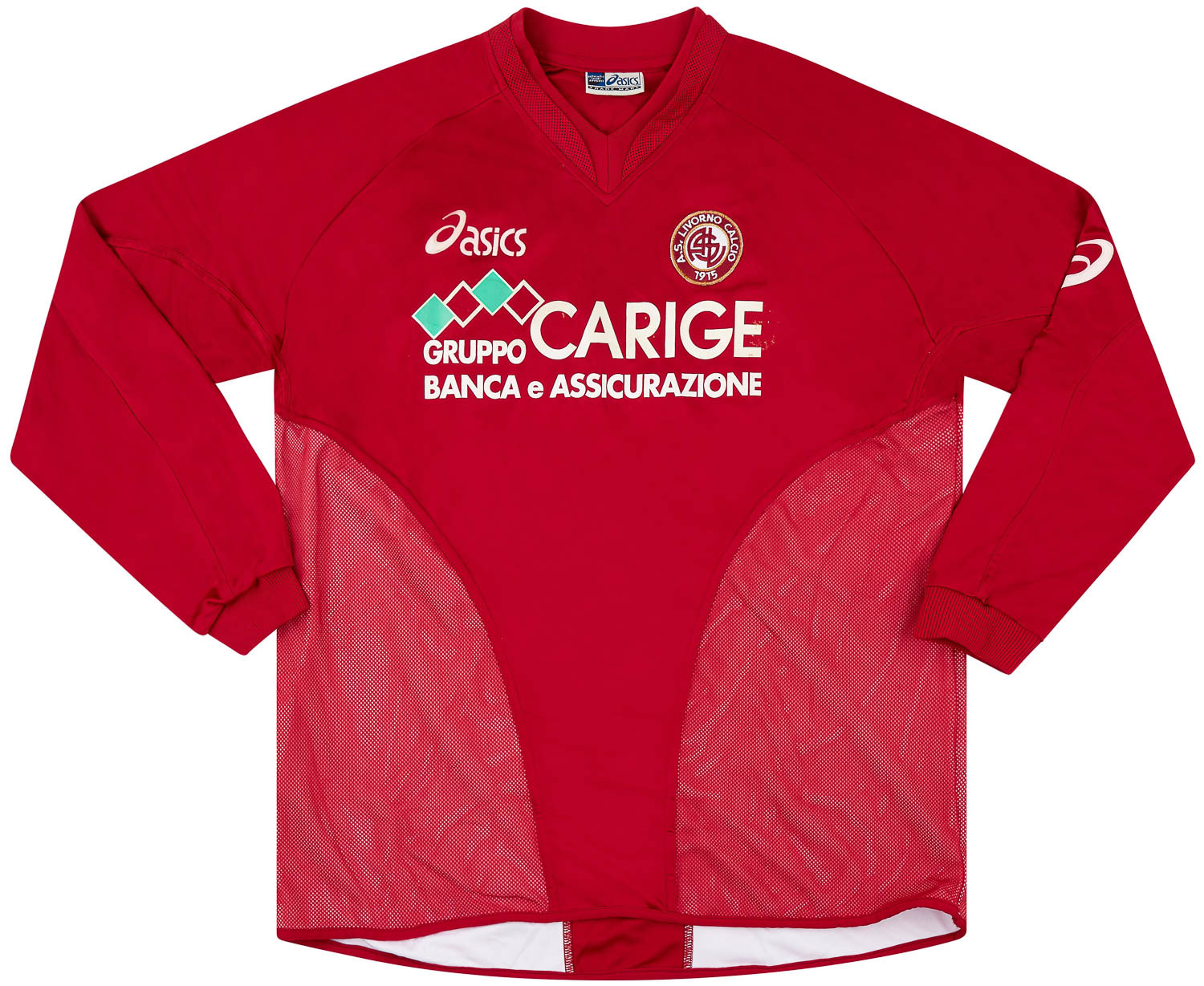Livorno
Introduction Sporting Club Livorno, commonly known as Livorno, is a storied football club based in the coastal city of Livorno, Italy. Founded in 1915, the club has a rich history intertwined with the social and economic fabric of the region. Known for its distinctive maroon colors and passionate fanbase, Livorno represents not just a sports […]
2004-05 Livorno Match Issue Home L/S Shirt Passoni #28
118.99£ - ca: €140
2004-05 Livorno Match Issue Home L/S Shirt Giallombardo #16
118.99£ - ca: €140
1999-00 Livorno Home Shirt #13 - 6/10 - (XL)
82.99£ - ca: €98
2018-19 Livorno Home Shirt (S)
82.99£ - ca: €98
2010-11 Livorno Third L/S Shirt - 9/10 - (M)
70.99£ - ca: €84
2006-07 Livorno Third Shirt - 7/10 - (M)
58.99£ - ca: €70
2017-18 Livorno Third Shirt - 9/10 - (M)
47.99£ - ca: €57
2008-10 Livorno Legea Training Shirt - 9/10 - (M)
41.99£ - ca: €50
Introduction
Sporting Club Livorno, commonly known as Livorno, is a storied football club based in the coastal city of Livorno, Italy. Founded in 1915, the club has a rich history intertwined with the social and economic fabric of the region. Known for its distinctive maroon colors and passionate fanbase, Livorno represents not just a sports team, but a cultural identity deeply rooted in the city’s maritime heritage. The club has navigated the challenges of Italy’s diverse footballing landscape, offering moments of triumph and resilience over its long history.
Club History
Livorno was established on March 15, 1915, when a small group of sports enthusiasts decided to form a club that mirrored the local community’s spirit. The club soon began to carve out its identity in Italian football. After a challenging start in lower divisions, Livorno achieved its first significant milestone in the 1927-28 season by securing promotion to the top tier of Italian football, known now as Serie A. They made a notable impact in the league, showcasing a competitive edge that would characterize their play for years to come.
The club experienced various ups and downs throughout the decades, including relegation and promotion cycles. However, the post-World War II era saw Livorno thrive, culminating in a memorable 1949-50 season. During this time, they finished in the top half of Serie A, establishing themselves as a formidable opponent and gaining respect across the italian football landscape. Yet, as the decades progressed, the club faced numerous challenges, including financial instability and struggles to stay afloat in the ever-competitive league system.
Achievements
Livorno’s list of accomplishments speaks to its position in Italian football history. The club’s most significant achievement came in the 2001-2002 season when they secured promotion to Serie A after a 55-year absence. This marked a pivotal moment for Livorno, as it returned to the highest echelon of Italian football with renewed vigor and aspirations. The team achieved its best-ever finish in Serie A in the 2006-07 season by securing a commendable 8th place, demonstrating the club’s potential to compete at high levels.
On the international scene, Livorno’s participation in the Coppa Italia has been notable, with the club making it to the finals in 1940. Although they ultimately fell short of securing the trophy on that occasion, their journey to the finals remains a landmark in the club’s proud history. Overall, Livorno’s achievements reflect a storied legacy that resonates with both local and national football culture.
Significant Players and Matches
Throughout its history, Livorno has been home to many players who left an indelible mark on the club. One of the most celebrated figures is the legendary forward, Ezio Pascutti, who played for Livorno in the late 1940s and early 1950s. Known for his impressive goal-scoring ability, Pascutti remains a fan favorite and a symbol of the club’s rich history.
Another notable player is Alessandro Diamanti, who had an impactful stint in the modern era. His creative playmaking and ability to score crucial goals helped elevate the club during challenging times, particularly in their successful campaigns in the early 2000s. Livorno also boasts legendary matches such as their triumphant 3-1 victory over arch-rivals Pisa in the Tuscan derby, a fixture that holds immense significance for the fans and has historically created electric atmospheres filled with passion.
Cultural Impact
Beyond the pitch, Livorno has made a lasting impact on local culture, boasting a loyal and passionate fanbase. The club serves as a source of community pride, uniting people across age and class boundaries. The supporters, known as the ” amaranto” for their team’s rich maroon color, are celebrated for their unwavering loyalty and vocal presence during matches. They create a vibrant atmosphere at the Stadio Armando Picchi, the club’s home ground, enhancing the matchday experience with their fervent chants and colorful displays.
The club also contributes to local heritage through numerous community programs and youth initiatives, fostering the next generation of footballers. As Livorno continues to navigate the intricacies of Italian football, the club remains a vital part of its city’s identity, embodying the values of resilience and collective pride.
Conclusion
In summary, Livorno holds a distinguished place in the tapestry of Italian football. With a compelling history marked by notable achievements and legendary players, the football club showcases the enduring spirit and passion of its fans. Livorno’s impact transcends mere sport, contributing to the cultural identity of its community. As the club looks ahead, the hope remains for a return to its former glory, and the loyalty of its fans will undoubtedly be a driving force in this journey.







